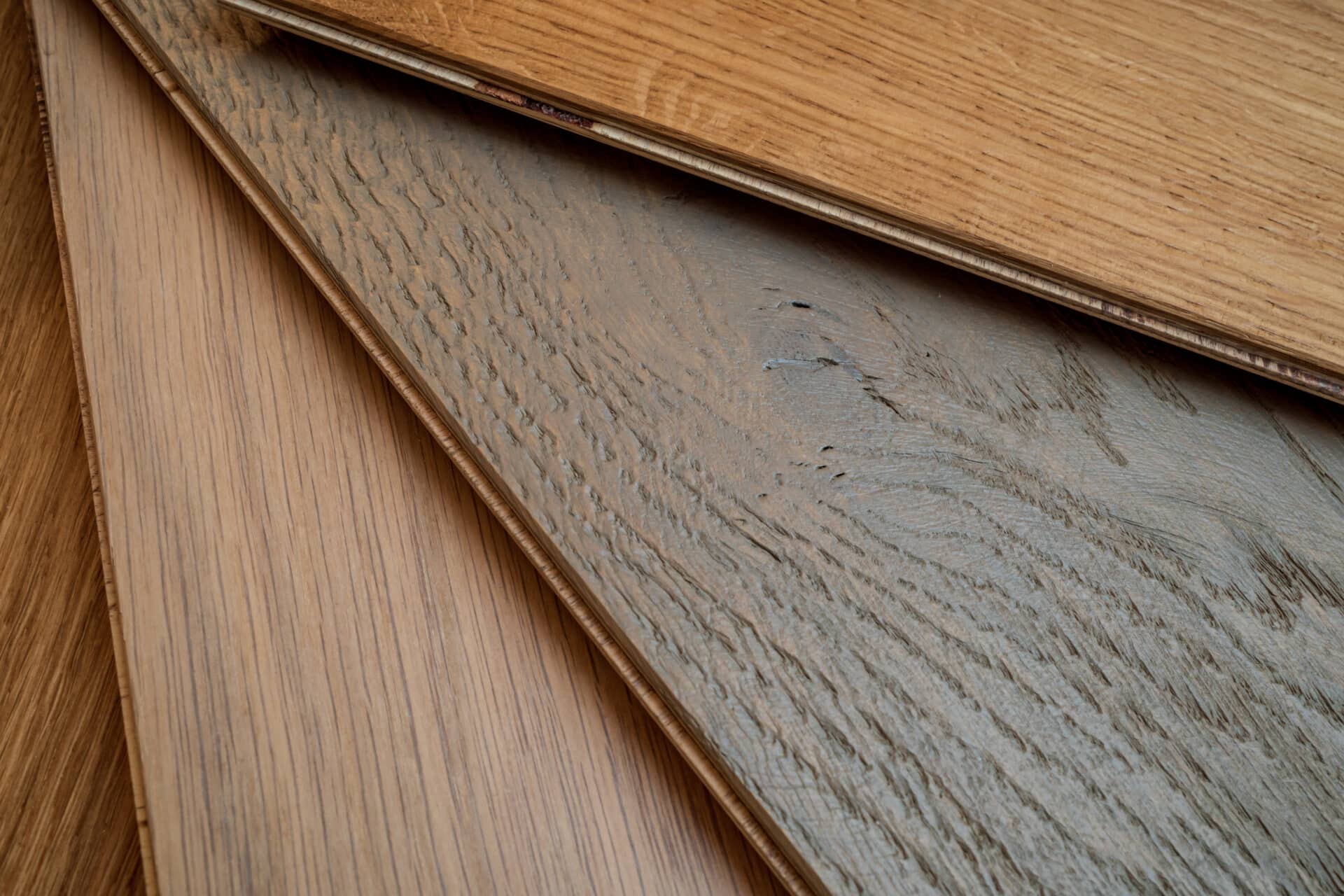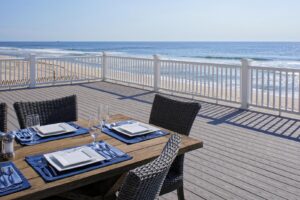Engineered wood, also known as manufactured wood or composite wood, is created by bonding wood strands, particles, or veneers together using strong adhesives. Unlike solid wood, engineered wood is designed for greater strength, stability, and resistance to environmental changes.
Engineered wood products offer durability, cost-effectiveness, and sustainability—making them an excellent choice to optimize quality while managing costs. These characteristics make engineered wood an ideal material for a variety of industries, including construction, cabinetry, furniture making, indoor wood flooring, and outdoor use, for decking and waterfront construction projects.
At Harbor Exports, we understand your strong construction needs for high-quality engineered wood, especially in harsh marine environments. In this guide, we’ll break down the different types of engineered wood and how to use them as building materials.
Advantages of Engineered Wood Products
Cost-Effectiveness
Compared to solid wood, engineered wood maximizes material use and reduces waste, helping cut costs while maintaining consistent quality throughout.
Durability & Strength
Many engineered wood products outperform traditional wood in strength, dimensional stability, and resistance to warping and cracking.
Versatility
Since it’s manufactured, whether you need structural materials for a construction project or furniture-grade panels, engineered wood can be customized to fit your needs.
Green Materials
Engineered wood products also often made from recycled materials or wood waste, so they’re eco-friendly!
The Most Common Types of Engineered Wood and What They’re Best For
1. Plywood
Plywood is made by gluing together thin layers of wood veneer, with the wood grain part of each layer placed in the same direction at right angles to the previous one. This structure enhances strength and flexibility, making plywood a top choice for wall and roof sheathing, flooring, cabinets, and furniture.
2. Oriented Strand Board (OSB)
OSB is constructed by compressing and bonding wood strands in specific orientations, a strong and cost-effective alternative to plywood. It’s commonly used for subflooring, wall and roof sheathing, and industrial packaging.
3. Medium-Density Fiberboard (MDF)
MDF board is made by breaking down wood into fine fibers, mixing it with resin, and pressing it into boards. It’s smooth, easy to cut, and ideal for detailed woodworking. It’s best for cabinetry, interior doors, and decorative molding.
4. Laminated Veneer Lumber (LVL)
LVL consists of multiple layers of thin wood veneers glued together under high pressure. It’s stronger than traditional lumber and a preferred choice for structural applications, such as beams and headers, load-bearing walls, and rim boards forming panels.
5. Particleboard
Particleboard is manufactured by compressing wood chips and sawdust with resin. While particle board is not as strong as plywood, it provides an budget-friendly option for office furniture, cabinet interiors, and flooring underlayment.
6. Cross-Laminated Timber (CLT)
CLT is a wood fiber composed of stacked and glued layers of lumber in alternating directions, creating a highly durable and fire-resistant panel. It’s best for walls and floors in commercial buildings, modular housing, and bridges and infrastructure projects.
7. Glued Laminated Timber (Glulam)
Glulam is engineered for strength and aesthetic appeal, often used in architectural beams and curved structures, bridges, and custom architectural designs.
Emerging Trends in Engineered Wood Construction Applications
Incorporating building materials with engineered wood brings cost savings, improved stability and sustainability, and increased demand for green construction. Designers and builders have been moving toward engineered wood products more and more since it started gaining popularity in the ’80s and ’90s, and it’s come a very long way since then!
Mass Timber Construction
With innovations like CLT, entire buildings are now being constructed using engineered wood, replacing steel and concrete for a lower-carbon alternative.
Prefabrication & Modular Homes
Engineered wood panels allow for precise, factory-made components that can be easily assembled on-site, reducing construction waste and labor costs.
Hybrid Structures
Combining engineered wood with other sustainable materials to create stronger, cost-effective, and eco-friendly buildings.
With advancements in the manufacturing process, technology, and material efficiency, engineered wood products are being designed to replace traditional lumber.
Engineered Wood and Sustainable Construction
As industries continue to prioritize sustainability, the engineered wood industry is an emerging leader in the future of eco-friendly construction and building materials. Engineered wood often incorporates recycled materials and promotes responsible forestry practices—a great perk for the eco-conscious.
Engineered wood is a sustainable choice due to:
- Reduced Deforestation: Many engineered wood products use smaller trees and wood waste, reducing the need for large-scale deforestation.
- Lower Carbon Footprint: Engineered wood manufacturing produces fewer greenhouse gas emissions compared to steel or concrete.
- Energy Efficiency: Buildings made with engineered wood tend to have better insulation properties, leading to reduced energy consumption.
- Recyclability: Many engineered wood products can be repurposed or recycled, minimizing waste in landfills.
How to Choose the Best Engineered Wood For Your Project
With so many types of engineered wood to choose from, how do you decide?
Here is your “Cheat Sheet” with some general guidelines on the best applications:
- Structural Applications: LVL, Glulam, and CLT offer excellent strength and stability
- Furniture and Cabinetry: Plywood, MDF, and particleboard are great choices due to their smooth surfaces and workability.
- Flooring and Underlayment: OSB and plywood provide durability and moisture resistance.
- Eco-Conscious Projects: CLT and Glulam are sustainable options that support green building initiatives.
Still unsure? Let our knowledgeable team at Harbor Exports help you choose the best engineered wood for your marine construction project!
Premium Engineered Wood, Delivered Worldwide – Only at Harbor Exports
When quality and durability matter, Harbor Exports is your trusted source for top-tier engineered wood. We specialize in supplying high-performance building materials that meet the toughest demands—perfect for coastal, marine, and high-end construction projects.
From decking to marine-grade lumber and pilings (and everything in between), we supply luxury construction projects with durable, beautiful materials from the most trusted brands. Get a premium selection of marine construction products with competitive pricing, global shipping, and expert support.
Browse our catalog, and then let us handle the rest—we deliver your materials wherever you need them, worldwide.
Questions? Contact our knowledgeable team to get started!
- About the Author
- Recent Posts
Brad Enfinger has been in construction for over 20 years and has been involved with every material from concrete slab to laying the roof on houses. Brad’s diverse experience has given him the knowledge needed to assist those with shipping building materials, whether it be a house, pole barn, deck, or a dock. Brad at Harbor Exports has anything for your building material needs and can export material all over the world.




